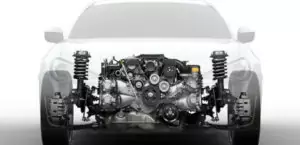The 2.0-liter Ford TXDA or 2.0 TDCi Duratorq DW engine was produced from 2010 to 2012 and was installed only on the first generation of the popular Kuga crossover after restyling. This power unit was essentially a clone of the famous French diesel engine DW10CTED4.
The Duratorq-DW line also includes internal combustion engines: QXWA, Q4BA and KNWA.
The engine was installed on:
- Ford Kuga Mk1 in 2010 – 2012.
Specifications
| Production years | 2010-2012 |
| Displacement, cc | 1997 |
| Fuel system | Common Rail |
| Power output, hp | 163 |
| Torque output, Nm | 340 |
| Cylinder block | cast iron R4 |
| Block head | aluminum 16v |
| Cylinder bore, mm | 85 |
| Piston stroke, mm | 88 |
| Compression ratio | 16.0 |
| Features | intercooler |
| Hydraulic lifters | yes |
| Timing drive | belt and chain |
| Phase regulator | no |
| Turbocharging | VGT |
| Recommended engine oil | 5W-30 |
| Engine oil capacity, liter | 5.6 |
| Fuel type | diesel |
| Euro standards | EURO 5 |
| Fuel consumption, L/100 km (for Ford Kuga 2011) — city — highway — combined |
8.5 5.8 6.8 |
| Engine lifespan, km | ~350 000 |
Disadvantages of the TXDA engine
- Modern fuel equipment with piezo injectors does not tolerate bad fuel;
- Delphi injectors quickly become unusable and cannot be repaired in any way;
- If a bunch of errors appear, it is worth inspecting the wiring harness, it is often frayed;
- Hydraulic lifters prefer the original oil, otherwise they can knock to 100,000 km;
- As with any new diesel, here you need to clean the EGR and burn through the particulate filter.






